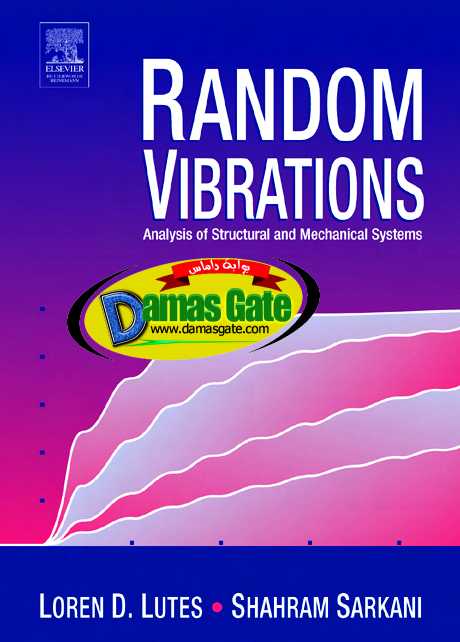Random Vibrations Analysis of Structural and Mechanical Systems

PREFACE
This book has much in common with our earlier book (Lutes and Sarkani,
1997). In fact, a few of the chapters are almost unchanged. At the same time, we
introduce several concepts that were not included in the earlier book and
reorganize and update the presentation on several other topics.
The book is designed for use as a text for graduate courses in random
vibrations or stochastic structural dynamics, such as might be offered in
departments of civil engineering, mechanical engineering, aerospace engineering,
ocean engineering, and applied mechanics. It is also intended for use as a
reference for graduate students and practicing engineers with a similar level of
preparation. The focus is on the determination of response levels for dynamical
systems excited by forces that can be modeled as stochastic processes.
Because many readers will be new to the subject, our primary goal is
clarity, particularly regarding the fundamental principles and relationships. At the
same time, we seek to make the presentation sufficiently thorough and rigorous
that the reader will be able to move on to more advanced work. We believe that
the book can meet the needs of both those who wish to apply existing stochastic
procedures to practical problems and those who wish to prepare for research that
will extend the boundaries of knowledge.
In the hopes of meeting the needs of a broad audience, we have made this
book relatively self-contained. We begin with a fairly extensive review of
probability, random variables, and stochastic processes before proceeding to the
analysis of dynamics problems. We do presume that the reader has a background
in deterministic structural dynamics or mechanical vibration, but we also give a
brief review of these methods before extending them for use in stochastic
problems. Some knowledge of complex functions is necessary for the
understanding of important frequency domain concepts. However, we also
present time domain integration techniques that provide viable alternatives to the
calculus of residues. Because of this, the book should also be useful to engineers
who do not have a strong background in complex analysis.
Download
*